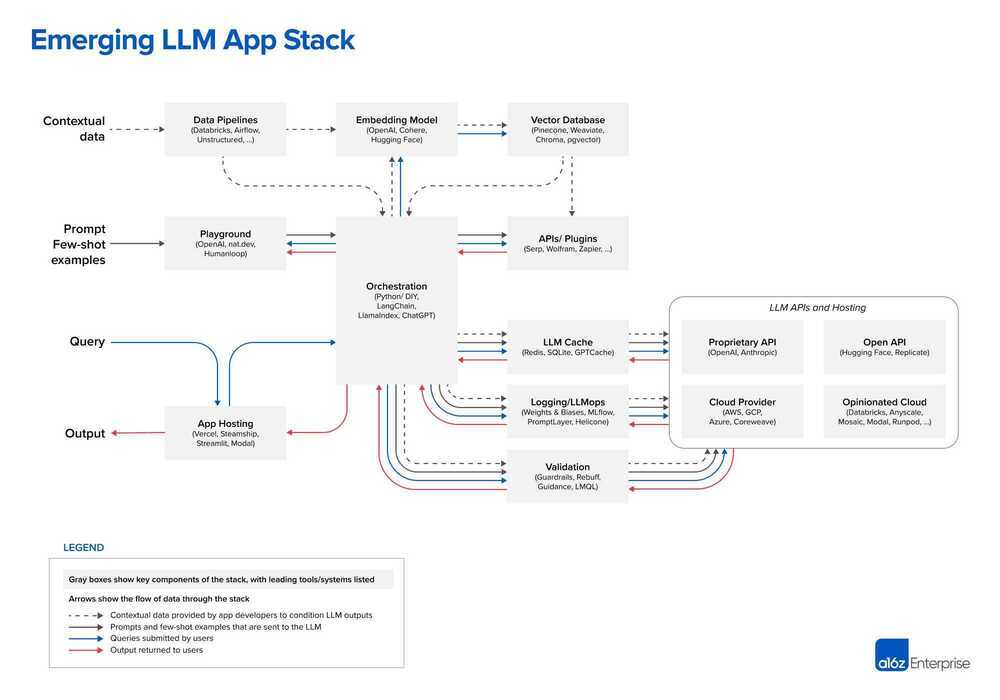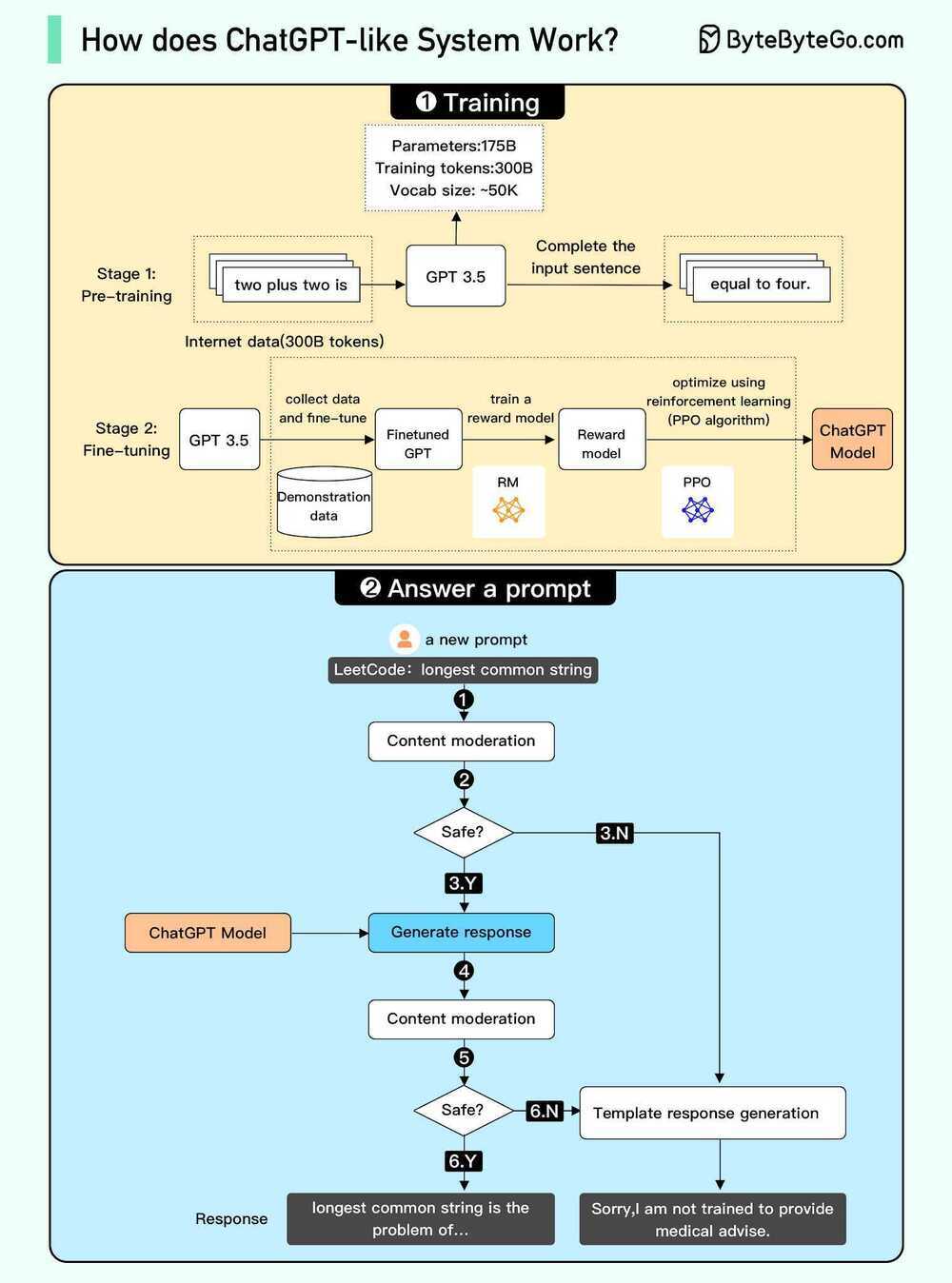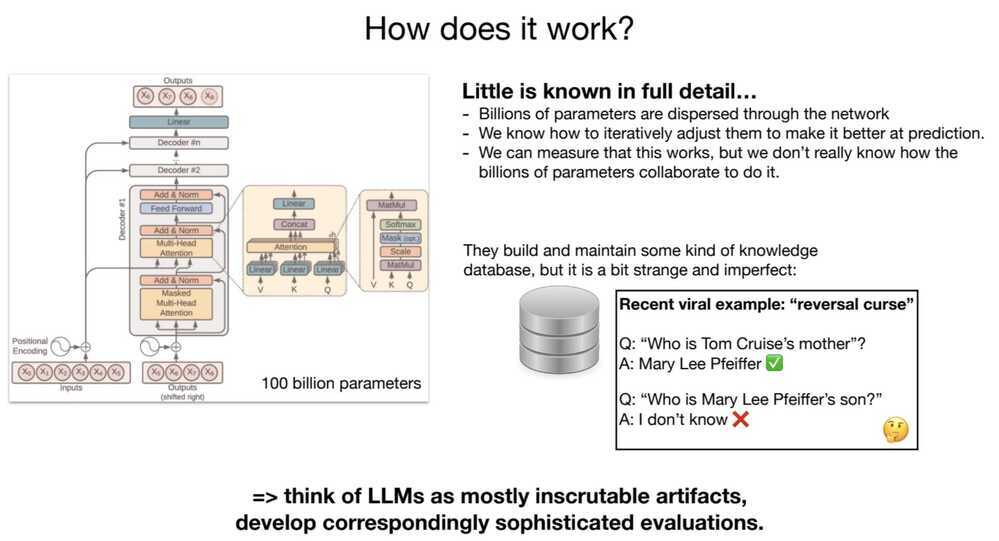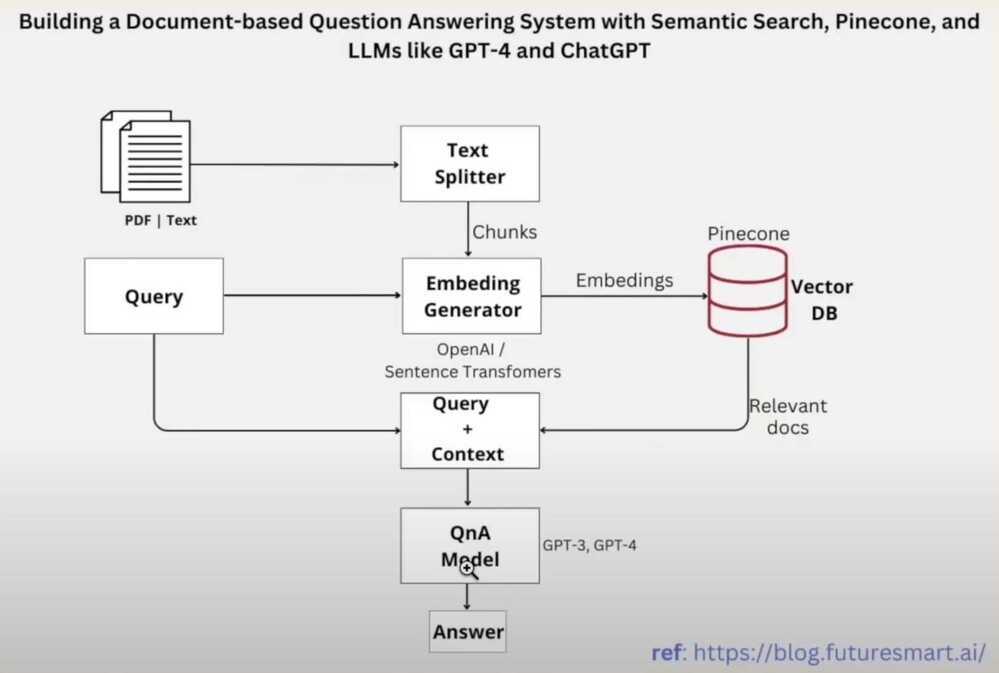LLM Building
- Create a Large Language Model from Scratch with Python - Tutorial - YouTube
- Understanding Large Language Models - by Sebastian Raschka
- Large language models, explained with a minimum of math and jargon
- Catching up on the weird world of LLMs
- Llama from scratch (or how to implement a paper without crying) | Brian Kitano
- Llama - EXPLAINED! - YouTube
- LLM2 Module 1 - Transformers | 1.6 Base/Foundation Models - YouTube
- 20 papers to master Language modeling? - YouTube
- Bringing Llama 3 to Life | Joe Spisak, Delia David, Kaushik Veeraraghavan & Ye (Charlotte) Qi - YouTube
Architecture

Emerging Architectures for LLM Applications | Andreessen Horowitz
Transformers, explained: Understand the model behind GPT, BERT, and T5 - YouTube
- Positional encodings
- Attention
- Self attention
- GPT3 - 45tb of text data

Let’s Architect! Discovering Generative AI on AWS | AWS Architecture Blog
Building

Decoding Strategies
- Greedy Search
- Beam search in Large Language Models (LLMs) is a decoding strategy that explores multiple potential output sequences simultaneously, keeping track of the most promising "beams" (or sequences) at each step, to find the most likely output.
- Decoding Demystified : How LLMs Generate Text - III - DEV Community
- Decoding Strategies in Large Language Models – Maxime Labonne
- Decoding Strategies in Large Language Models
- Decoding Strategies: How LLMs Choose The Next Word
- Understanding greedy search and beam search | by Jessica López Espejel | Medium
How to train your ChatGPT
Stage 1: Pretraining
- Download ~10TB of text
- Get a cluster of ~6,000 GPUs
- Compress the text into a neural network, pay ~$2M, wait ~12 days
- Obtain base model
Stage 2: Finetuning
- Write labeling instructions
- Hire people (or use scale.ai!), collect 100K high quality ideal Q&A responses, and/or comparisons
- Finetune base model on this data, wait ~1 day
- Obtain assistant model
- Run a lot of evaluations
- Deploy
- Monitor, collect misbehaviors, go to step 1
LLM Security
- Jailbreaking
- Prompt injection
- Backdoors & data poisoning
- Adversarial inputs
- Insecure output handling
- Data extraction & privacy
- Data reconstruction
- Denial of service
- Escalation
- Watermarking & evasion
- Model theft
1hr Talk Intro to Large Language Models - YouTube
Awesome ChatGPT Prompts | This repo includes ChatGPT prompt curation to use ChatGPT better.
Dev Tools
-
LangChain
-
Langfuse
-
Eden AI
-
Langdock
-
LLM Spark
-
Introducing Code Llama, a state-of-the-art large language model for coding
-
GitHub - jerryjliu/llama_index: LlamaIndex (GPT Index) is a data framework for your LLM applications
-
Building your Generative AI apps with Meta's Llama 2 and Databricks | Databricks Blog
-
GitHub - stoyan-stoyanov/llmflows: LLMFlows - Simple, Explicit and Transparent LLM Apps
-
GitHub - ShishirPatil/gorilla: Gorilla: An API store for LLMs
-
GitHub - Chainlit/chainlit: Build Python LLM apps in minutes ⚡️
-
GitHub - tensorchord/Awesome-LLMOps: An awesome & curated list of best LLMOps tools for developers
-
AirLLM Unleashed. Efficiently Running 70B LLM Inference… | by Haribaskar Dhanabalan | Medium
Ollama / LM Studio
The easiest way to get up and running with large language models locally.
docker run -d -v ollama:/root/.ollama -p 11434:11434 --name ollama ollama/ollama
docker exec -it ollama ollama run llama2
docker exec -it ollama ollama run llama2-uncensored
docker exec -it ollama ollama run mistral
>>> /? # for help
LM Studio - SUPER EASY Text AI - Windows, Mac & Linux / How To - YouTube
LM Studio - Discover, download, and run local LLMs
Ollama Course – Build AI Apps Locally - YouTube
Run DeepSeek-R1 on Your Laptop with Ollama - DEV Community
Jan: Open source ChatGPT-alternative that runs 100% offline - Jan
open-webui
Open WebUI is an extensible, feature-rich, and user-friendly self-hosted AI platform designed to operate entirely offline. It supports various LLM runners like Ollama and OpenAI-compatible APIs, with built-in inference engine for RAG, making it a powerful AI deployment solution.
GitHub - open-webui/open-webui: User-friendly AI Interface (Supports Ollama, OpenAI API, ...)
oobabooga
A Gradio web UI for Large Language Models. Supports transformers, GPTQ, AWQ, EXL2, llama.cpp (GGUF), Llama models.
GitHub - oobabooga/text-generation-webui-extensions
Ludwig
Ludwig is an open-source, declarative machine learning framework that makes it easy to define deep learning pipelines with a simple and flexible data-driven configuration system. Ludwig is suitable for a wide variety of AI tasks, and is hosted by the Linux Foundation AI & Data.
Ludwig enables you to apply state-of-the-art tabular, natural language processing, and computer vision models to your existing data and put them into production with just a few short commands.
SAAS
- DataRobot AI Platform | Deliver Value from AI
- Accelerating Systems with Real-time AI Solutions - Groq
- CrewAI
Resources
Development with Large Language Models Tutorial - OpenAI, Langchain, Agents, Chroma - YouTube

- GitHub - openai/openai-cookbook: Examples and guides for using the OpenAI API
- Vector Embeddings Tutorial - Create an AI Assistant with GPT-4 & Natural Language Processing - YouTube
- This new AI is powerful and uncensored… Let’s run it - YouTube
- Learn Generative AI in 30 Hours
- AI Watermarking 101: Tools and Techniques
- Optimize generative AI applications with pgvector indexing: A deep dive into IVFFlat and HNSW techniques | AWS Database Blog
- V-JEPA: The next step toward advanced machine intelligence
- GitHub - GoogleCloudPlatform/generative-ai: Sample code and notebooks for Generative AI on Google Cloud, with Gemini on Vertex AI
- ThunderKittens to make the GPUS go brr - by Bugra Akyildiz
- RoCE networks for distributed AI training at scale - Engineering at Meta
- GitHub - naklecha/llama3-from-scratch: llama3 implementation one matrix multiplication at a time
- What We’ve Learned From A Year of Building with LLMs – Applied LLMs
- Let's reproduce GPT-2 (124M) - YouTube
- Scaling and Reliability Challenges of LLama3
- Building LLMs from the Ground Up: A 3-hour Coding Workshop - YouTube
- How AWS engineers infrastructure to power generative AI
- Advanced RAG Pipelines with LlamaIndex & Amazon Bedrock - YouTube
- Deep Dive into LLMs like ChatGPT - YouTube
- How Do AI Agents Actually Work? - YouTube
- What makes LLM tokenizers different from each other? GPT4 vs. FlanT5 Vs. Starcoder Vs. BERT and more - YouTube
- LLM Visualization